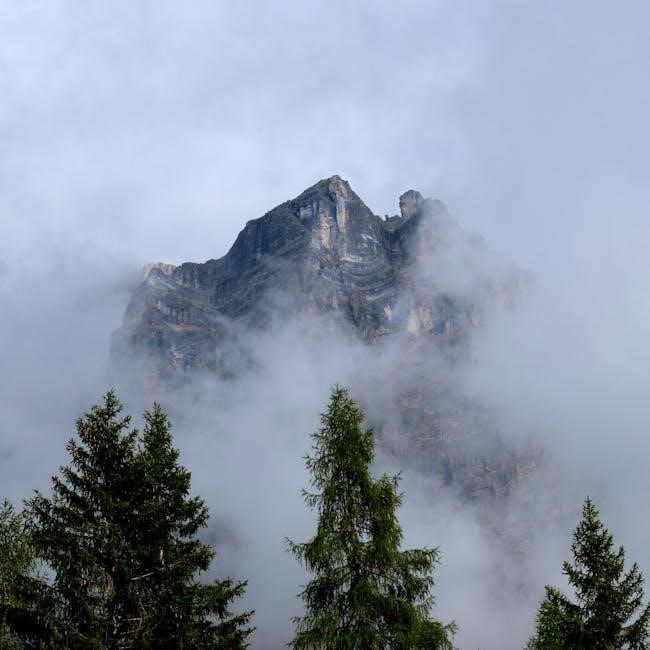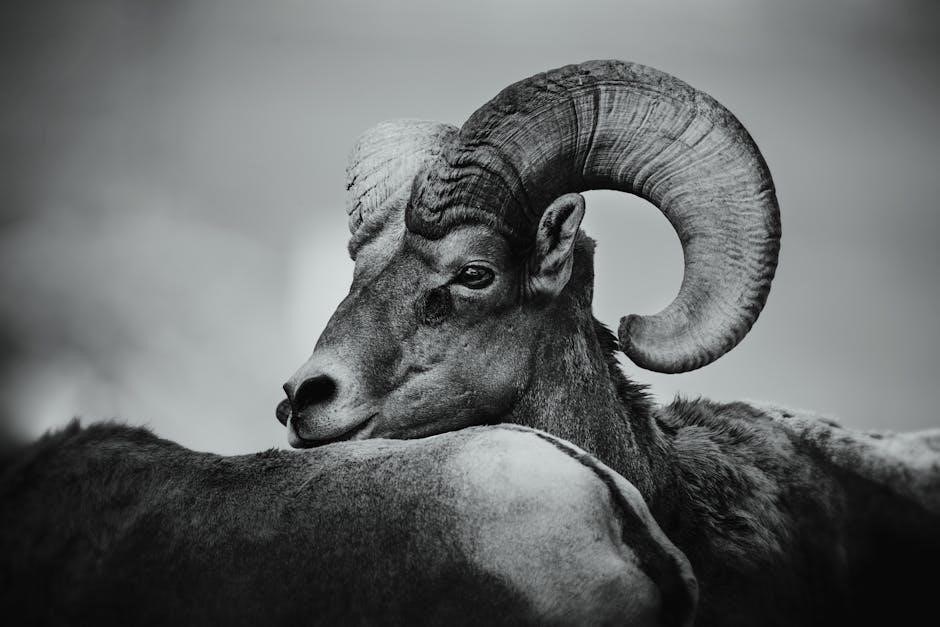
Aspiring mountain guides need to assess skills, pursue proper training, obtain certifications, and build a professional network. This challenging path requires dedication and a love for mountains. Successful completion leads to certifications, allowing work as a ski guide. Good physical fitness is essential.
Understanding the Mountain Guide Profession
The mountain guide profession demands a unique skillset, going beyond simply leading people on trails. It requires extensive knowledge of mountain environments, weather patterns, and safety protocols. A mountain guide is responsible for ensuring the safety and well-being of their clients, managing risks associated with mountaineering, skiing, or hiking. They need to know all kinds of mountain relief, the work is possible any time of year. They must be able to make critical decisions in challenging situations, possess excellent communication skills to effectively lead and instruct groups, and maintain a high level of physical fitness. A good mountain guide must have a good mountaineering technique for skiers and snowboarders. Understanding the profession involves recognizing the dedication, expertise, and responsibility it entails, setting it apart from casual guiding or simply hiking frequently.
It is also important to differentiate between guides and instructors, who may have different specializations and roles within the mountain environment. The mountain guide profession requires a deep commitment to safety, environmental stewardship, and continuous learning.
Essential Skills and Knowledge for Mountain Guides
To excel as a mountain guide, a comprehensive set of skills and knowledge is indispensable. Core skills include proficient rope work, advanced climbing techniques, wilderness first aid, avalanche safety expertise, and navigation proficiency using maps, compass, and GPS. Knowledge of local flora and fauna, geology, and weather forecasting is crucial for providing informative and safe experiences. Mountain guides must also possess excellent communication and leadership abilities to effectively manage groups, impart knowledge, and make sound decisions under pressure. They should be adept at risk assessment, emergency response, and problem-solving in remote environments. Understanding the impact of human activities on mountain ecosystems and practicing Leave No Trace principles is essential for responsible guiding. Continuous learning, staying updated on industry best practices, and pursuing ongoing training are vital for maintaining a high level of competence and ensuring client safety.
Some mountain guides needs to obtain certificates of an alpinism guide and ski guide.
Educational Paths and Certifications
Aspiring mountain guides typically pursue formal education and certifications from recognized organizations. National mountain guide schools offer comprehensive training programs covering technical skills, safety protocols, and guiding techniques. These programs often involve rigorous assessments, practical exams, and mentorship opportunities. Certifications from organizations like the UIAGM (International Federation of Mountain Guides Associations) are highly respected and demonstrate a guide’s competence and professionalism. In Russia, the Association of Mountain Guides of Russia (AGGR) provides training and certification aligned with international standards. Completing a certified program usually entails modules in alpinism, rock climbing, ski mountaineering, and wilderness medicine. The certification process may also require a certain amount of experience in various mountain environments. Continuous professional development is crucial for maintaining certifications and staying current with industry best practices. Some guides may also choose to specialize in specific areas, such as ice climbing or expedition guiding, which may require additional training and certifications.
The National School of Mountain Guides was established in 2011.
National School of Mountain Guides
The National School of Mountain Guides plays a vital role in shaping the future of mountain guiding in Russia. Established in 2011 by the Federation of Mountaineering of Russia and the Association of Mountain Guides of Russia (AGGR), the school provides standardized training and certification programs for aspiring guides. The curriculum is designed to meet international standards and covers a wide range of essential skills and knowledge, including mountaineering techniques, risk management, and client care. The school’s instructors are experienced guides and mountaineers who share their expertise and passion for the mountains. The training programs typically involve a combination of classroom instruction, practical field exercises, and assessments. Graduates of the National School of Mountain Guides are well-prepared to work as professional guides in various mountain environments. The school also collaborates with international organizations to ensure that its programs remain current and aligned with global best practices. Completing the school’s rigorous training is a significant step towards a successful and rewarding career in mountain guiding.
The training takes an average of 4 years and costs around 500,000.
The Role of the Association of Mountain Guides of Russia (AGGR)
The Association of Mountain Guides of Russia (AGGR) is a crucial organization in the Russian mountain guiding community. It sets standards, provides training, and certifies mountain guides to ensure safety and professionalism. AGGR collaborates with the National School of Mountain Guides on curriculum development and certification processes. The association also represents the interests of mountain guides and promotes responsible mountain tourism. AGGR membership offers networking opportunities, access to professional development resources, and recognition within the guiding community. AGGR’s standards align with international guidelines, enabling Russian guides to work globally. The association actively participates in safety initiatives and promotes best practices in mountain guiding. AGGR also organizes meetings and events for guides to share knowledge and experiences. The association plays a vital role in maintaining the integrity and quality of mountain guiding in Russia. By setting high standards and providing ongoing support, AGGR helps ensure that aspiring guides receive the necessary training and resources to excel in their careers and contribute to the safety and enjoyment of mountain enthusiasts.
Meetings of the Presidium and members of the Association of Mountain Guides are held annually.

Experience Requirements for Aspiring Guides
Aspiring mountain guides must accumulate substantial experience in mountaineering and related activities. This experience typically includes a minimum number of years actively involved in climbing, often four or more. Candidates should demonstrate experience in various mountain regions, showcasing adaptability and proficiency in different terrains. A solid record of successful ascents, including challenging routes, is essential. Experience leading or assisting on guided trips is highly valued, as it demonstrates leadership and group management skills. Applicants may need to provide detailed logs of their climbing history, including dates, locations, and difficulty ratings. Prior experience in rescue operations or emergency response can also be beneficial. Furthermore, familiarity with different climbing styles and techniques is expected. The experience requirements ensure that aspiring guides possess the necessary skills and judgment to navigate complex mountain environments safely. This practical experience complements formal training and certification, equipping guides to handle diverse challenges and ensure the well-being of their clients. Sufficient experience allows for confident decision-making and effective risk management in the mountains.
Physical Fitness and Technical Proficiency
Mountain guiding demands exceptional physical fitness and advanced technical skills. Aspiring guides must possess a high level of endurance for prolonged exertion at altitude, including hiking, climbing, and skiing. Strength and agility are crucial for navigating challenging terrain and assisting clients. Technical proficiency encompasses expertise in rope work, belaying, rappelling, and glacier travel. Guides must be adept at using specialized equipment such as ice axes, crampons, and avalanche safety gear. Competence in navigation, including map reading, compass use, and GPS technology, is essential for route finding and hazard assessment. Moreover, guides should demonstrate proficiency in first aid and wilderness medicine to handle emergencies effectively. Maintaining peak physical condition requires a rigorous training regimen, including cardiovascular exercises, strength training, and altitude acclimatization. Ongoing practice and refinement of technical skills are necessary to stay current with industry standards and best practices. Regular participation in personal climbing and skiing expeditions helps maintain both fitness and technical expertise. The combination of physical robustness and technical mastery enables guides to ensure their safety and the safety of their clients in demanding mountain environments. Continuous self-improvement in these areas is vital for a successful guiding career.
Financial Investment in Training and Certification
Pursuing a career as a mountain guide necessitates a significant financial investment in training and certification. Aspiring guides must budget for various expenses, including course fees, equipment costs, and examination charges. Training programs offered by reputable organizations, such as the National School of Mountain Guides, can be expensive, often requiring several years of commitment. Equipment costs encompass essential gear like climbing hardware, skis, avalanche safety tools, and personal protective equipment, which can quickly accumulate. Certification fees are required to obtain credentials from recognized bodies like the Association of Mountain Guides of Russia. Additionally, candidates should factor in travel expenses associated with attending courses and exams, which may be located in remote mountain regions. Furthermore, the cost of maintaining certifications through continuing education and professional development activities should not be overlooked. Securing funding for these investments may involve personal savings, loans, or grants. Some aspiring guides seek sponsorship from outdoor gear companies or mountain guiding organizations to offset expenses. Despite the financial challenges, the long-term rewards of a fulfilling career as a mountain guide make the investment worthwhile for passionate individuals. Careful financial planning and resource management are crucial for navigating the path to becoming a certified mountain guide.
Navigating the Risks and Responsibilities
Mountain guiding involves inherent risks and significant responsibilities, demanding meticulous preparation and unwavering attention to safety. Guides must possess comprehensive knowledge of mountain environments, including weather patterns, avalanche terrain, and potential hazards. They are responsible for assessing risks, making informed decisions, and implementing appropriate safety measures to protect clients. This includes conducting thorough route planning, evaluating snow conditions, and managing group dynamics. Guides must also be proficient in emergency response, including first aid, rescue techniques, and evacuation procedures. They are responsible for ensuring that clients have the necessary skills, equipment, and physical fitness for the planned activity. Effective communication is crucial for conveying instructions, managing expectations, and maintaining a positive group environment. Guides must also adhere to ethical standards, respecting the environment and minimizing their impact on fragile ecosystems. They are responsible for promoting responsible mountain practices and educating clients about Leave No Trace principles. Furthermore, guides must maintain their own physical and mental well-being to effectively perform their duties. This includes regular training, self-assessment, and seeking support when needed. Ultimately, navigating the risks and responsibilities of mountain guiding requires a combination of technical expertise, leadership skills, and a deep commitment to safety and client well-being. Aspiring guides must be prepared to embrace these challenges and uphold the highest standards of professionalism.

Building a Network and Finding Opportunities
Establishing a robust professional network is crucial for aspiring mountain guides seeking employment and career advancement. Networking involves connecting with fellow guides, industry professionals, potential employers, and relevant organizations. Attending industry events, workshops, and conferences provides opportunities to meet and interact with individuals in the field. Joining professional associations, such as the Association of Mountain Guides of Russia (AGGR), offers access to networking events, mentorship programs, and job boards. Volunteering or interning with established guiding companies or organizations can provide valuable experience and networking opportunities. Building relationships with local climbing gyms, outdoor retailers, and tourism agencies can also lead to potential job referrals. Online platforms, such as LinkedIn and industry-specific forums, can facilitate connections with professionals and provide insights into job openings. Maintaining a professional online presence, showcasing skills and experience, is essential for attracting potential employers. Seeking mentorship from experienced guides can provide valuable guidance and support in navigating the industry. Networking involves actively engaging with others, sharing knowledge, and offering assistance. Building a reputation for reliability, professionalism, and expertise is crucial for securing long-term employment opportunities. Furthermore, networking can lead to collaborations on projects, sharing of resources, and access to continuing education opportunities. Aspiring guides should actively cultivate their network, nurturing relationships and seeking out opportunities to connect with others in the mountain guiding community. A strong network can open doors to new experiences and propel a successful career.
Differentiating Between Guides and Instructors
Understanding the distinction between mountain guides and instructors is crucial for aspiring professionals and those seeking their services. While both roles involve expertise in mountaineering and outdoor skills, their primary functions and responsibilities differ significantly. Mountain guides primarily focus on leading clients safely through challenging terrain, ensuring their well-being and facilitating their experience. They possess extensive knowledge of specific routes, weather conditions, and hazard assessment, enabling them to make informed decisions and manage risks effectively. Guides prioritize client safety and enjoyment, adapting their approach to accommodate varying skill levels and physical abilities. They often provide basic instruction and support, but their primary role is to navigate and manage the expedition. Mountain instructors, on the other hand, emphasize teaching and skill development. They provide comprehensive training in mountaineering techniques, safety protocols, and risk management strategies. Instructors focus on empowering students with the knowledge and skills necessary to become independent and competent climbers. They typically work in structured educational settings, delivering courses and workshops that cover a wide range of topics. While instructors may also lead expeditions, their primary goal is to educate and mentor aspiring climbers. The certification pathways for guides and instructors also differ, reflecting their distinct roles and responsibilities. Guides typically pursue certifications that emphasize practical experience and route-specific knowledge, while instructors often require advanced certifications in teaching methodologies and curriculum development. Recognizing these differences is essential for individuals seeking guidance or instruction in mountaineering, ensuring they receive the appropriate expertise and support for their specific goals and needs.
